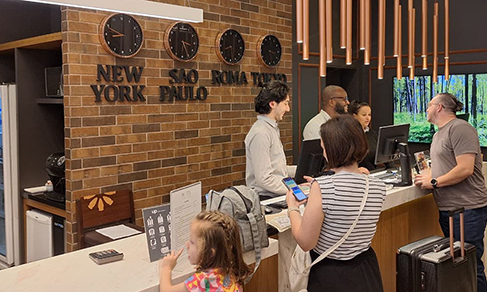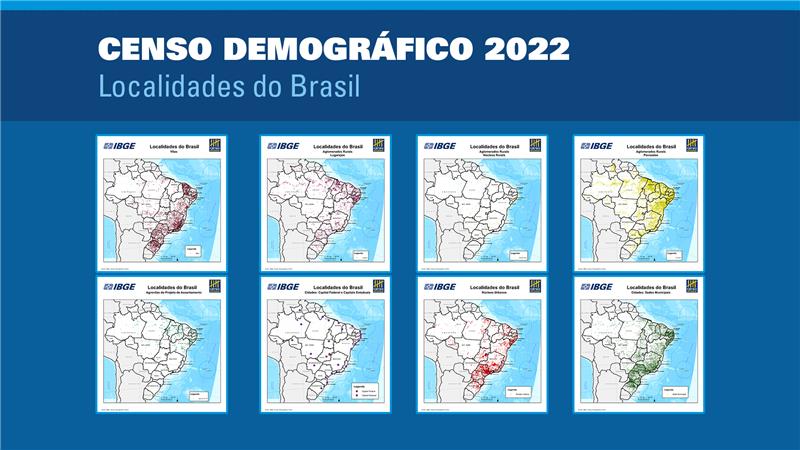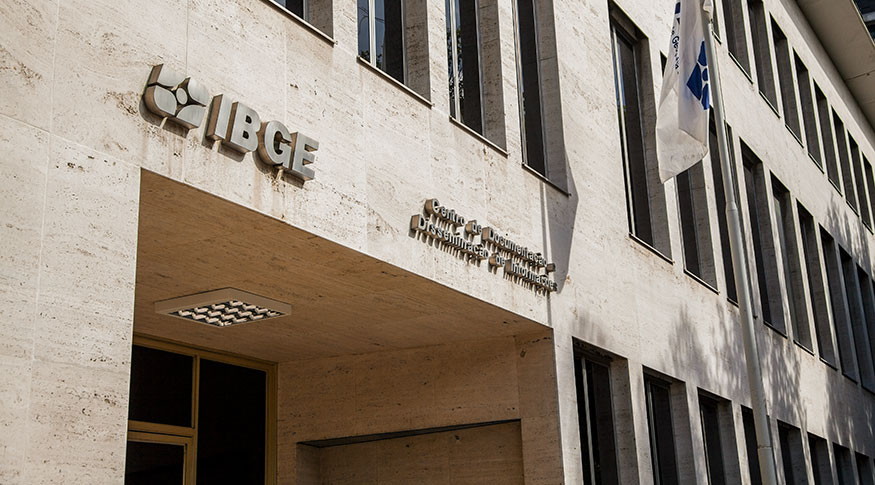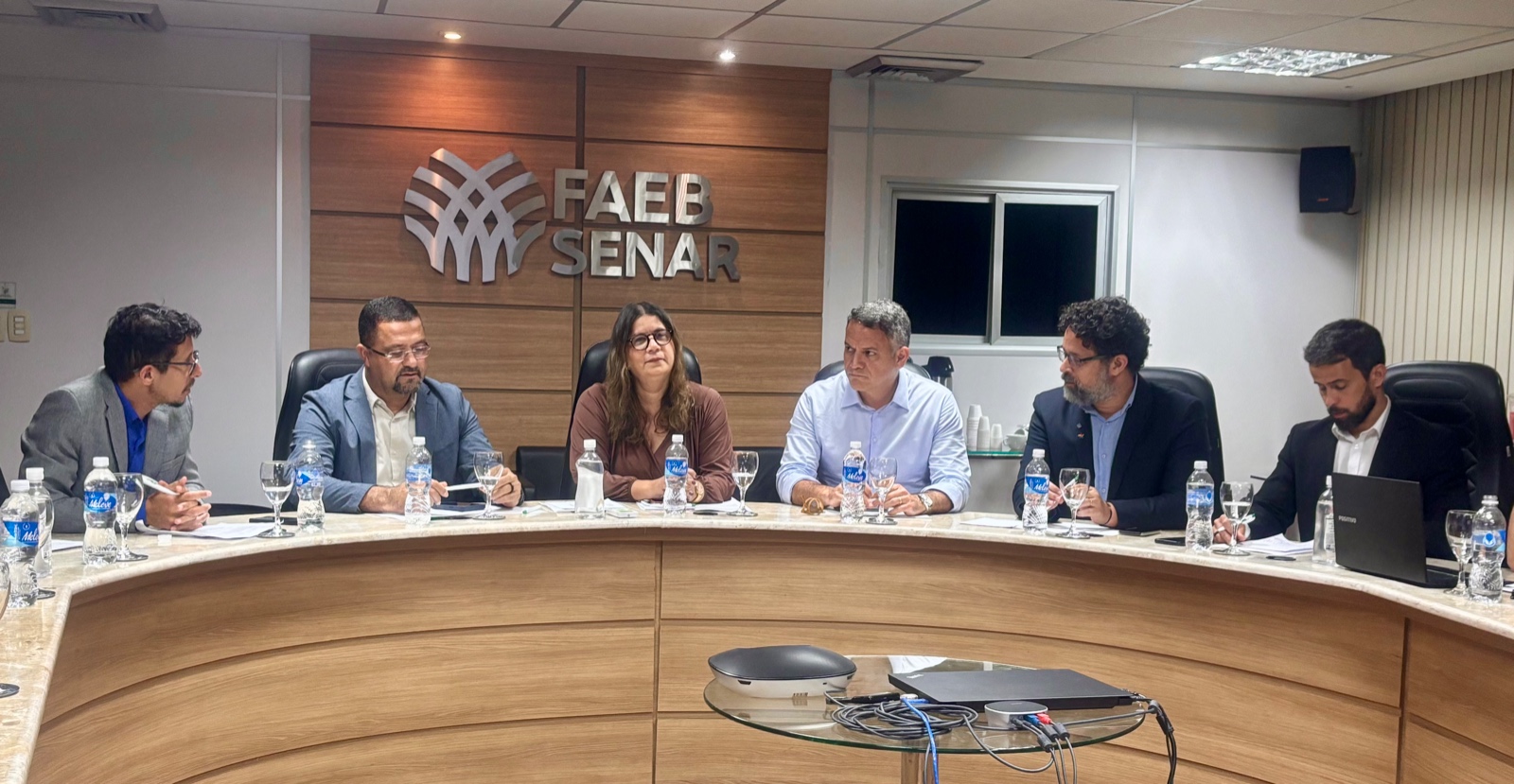Census of Agriculture: more than 1 million properties enumerated in the first month of collection
November 01, 2017 01h13 PM | Last Updated: November 01, 2017 06h38 PM
With more than 20 thousand enumerators and supervisors at work, the first month of the Census of Agriculture 2017 was marked by adjustments, but also by fulfilled expectations, since more than one million establishments all over Brazil have already been enumerated. More work will come in the following months with the presence of more professionals in the field and the improvement of processes in the census operation.

“The number of questionnaires received in this starting month surprised us, for we know the initial weeks are a period of adaptation. Data collection will last five months, for a total 5 million establishments, which means we need to process 1 million questionnaires per month. We managed to do that in October, and in November we will probably surpass that number, after making some adjustments and hiring more enumerators", says the technical coordinator for the Census of Agriculture, Antônio Florido.
Work does not end with the online submission of the questionnaires filled out in the establishments visted by the enumerator. The data in them will be analyzed by supervisors and regional census agents who check the consistency of the information entered in the mobile collection device (DMC). The might be a mistake, for example, some type of inconsistency between the data, and that can be checked by supervisors by means of an online platform of the Institute.
“We are very worried about the number - and the quality of data - in the questionnaires. So we need a supervision team and we need systems working perfectly so that the supervisors can access the data", Florido highlights. “The enumerator will be continuously visiting establishments. If there is no guidance concerinig the patterns to follow, erros will take place repeatedly."
| Census of Agriculture 2017 - status on 31/10/2017 | |||
|---|---|---|---|
| Federation Units | Establishments | ||
| Estimate (2007) | Collected | % collected | |
| BraZil | 5,252,363 | 1,036,867 | 19.74 |
| North | 506,519 | 79,172 | 15.63 |
| RONDÔNIA | 88,093 | 22,810 | 25.89 |
| ACRE | 30,046 | 7,389 | 24.59 |
| AMAZONAS | 81,361 | 6,216 | 7.64 |
| RORAIMA | 10,655 | 2,739 | 25.71 |
| PARÁ | 236,141 | 25,924 | 10.98 |
| AMAPÁ | 3,555 | 952 | 26.78 |
| TOCANTINS | 56,668 | 13,142 | 23.19 |
| Northeast | 2,477,725 | 486,234 | 19.62 |
| MARANHÃO | 289,085 | 46,538 | 16.10 |
| PIAUÍ | 248,229 | 48,699 | 19.62 |
| CEARÁ | 383,902 | 78,707 | 20.50 |
| RIO GRANDE DO NORTE | 83,526 | 19,325 | 23.14 |
| PARAÍBA | 167,761 | 19,130 | 11.40 |
| PERNAMBUCO | 309,181 | 70,872 | 22.92 |
| ALAGOAS | 128,534 | 24,331 | 18.93 |
| SERGIPE | 100,927 | 18,211 | 18.04 |
| BAHIA | 766,580 | 160,421 | 20.93 |
| Southeast | 932,321 | 209,577 | 22.48 |
| MINAS GERAIS | 556,713 | 125,701 | 22.58 |
| ESPÍRITO SANTO | 85,214 | 21,242 | 24.93 |
| RIO DE JANEIRO | 58,900 | 12,139 | 20.61 |
| SÃO PAULO | 231,494 | 50,495 | 21.81 |
| South | 1,011,003 | 204,665 | 20.24 |
| PARANÁ | 373,044 | 76,404 | 20.48 |
| SANTA CATARINA | 195,199 | 43,206 | 22.13 |
| RIO GRANDE DO SUL | 442,760 | 85,055 | 19.21 |
| Central West | 324,795 | 57,219 | 17.62 |
| MATO GROSSO DO SUL | 65,127 | 11,189 | 17.18 |
| MATO GROSSO | 116,151 | 12,065 | 10.39 |
| GOIÁS | 139,427 | 32,725 | 23.47 |
| FEDERAL DISTRICT | 4,090 | 1,240 | 30.32 |
Works in progress all over the country
Although its not not taking place simultaneously in all the municipalities, the Census of Agriculture has already started in all the state of Brazil. Differences in data collection are based on the singularities of each location, such as Mato Grosso, for example, where the predominance of bi properties and the lack of enumerators have caused delay in the beginning of the operation.
“We've been working at a good pace, in general. Some states, like Mato Grosso, Mato Grosso do Sul e Paraíba, worry us more because their results are below average. We have to detect the problem and help them fix it. Mato Grosso is a very complicated state, because the census tracts are huge, as the establishments in them", highlights the coordinator. “Our biggest preoccupation now is to cover the North and Central West”, he adds.
According to Florido, each state follows its own schedule, and the advance has been proportional to the number of enumerators in the field. “If we consider absolute figures, for example, Bajia has a lot of enumerators, and because of that a big number of establishments have already been visited. If we consider a proportional division, some smaller states are ahead."
On the average, each enumerator will visit about six census tracts (a division of the territory), which will help explain why some places still do not have enumerators at work. A very logical sequence is followed: they can only start working in a given area after finishing the previous one. So, when the enumerator visits a tract, other five, on the average, will be in line for collection. “Each enumerator delivers about 400 questionnaires, which means 5, 6 or 7 census tracts per professional. And they cover each one at a time.” Besides, more enumerators are needed, once not all the localities had approved candidates, and some other have given up.
In order to fulfill that need, the IBGE is now having an extra selection process to hire more persons for open vacancies. “They are expected to start activities on November 20. They take tests and undergo training before being hired. That is why they must start in November".
The Census of Agriculture has started smoothly, but the IBGE is aware of the important schedule ahead. A major reason is that the operation budget has two distinct fiscal years (approximately R$ 505 million in 2017 and R$ 280 million in 2018), which means that some steps of the survey must be concluded by the end of December to guarantee full use of the resources available.
“It is the first time a Census operation will be divided into two fiscal years. we have to stick to the budget set for 2017 until the end of the year, ” Florido highlights. “We cannot lose sight of that, it is a strategic issue for the IBGE.”
Text: Rodrigo Paradella
Infographic: Pedro Vidal
Image: Pixabay

















